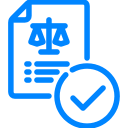Cybersecurity, compliance, and managed IT built for insurance and
mortgage firms who can’t afford downtime, breaches, or violations.
We meet the standards your regulators expect — and your
clients demand.
.webp)
WHAT WE DO
Insurance and mortgage organizations face increasing cyber threats and tightening
regulations. We help you close the gaps before something goes wrong.






Every consultation, every assessment, every strategic discussion.
You speak directly with our CEO, Walter Contreras.
For 25 years, Walter has helped New York businesses strengthen their cybersecurity, reduce operational risk, and meet regulatory requirements without confusion or overwhelm.
He’s a graduate of Columbia Business School, a cybersecurity practitioner, and an expert in AI-driven software development. Walter has become a trusted advisor to insurance agencies, mortgage lenders, and financial firms that need clarity, stability, and expert guidance.
Speaking with Walter isn’t a sales call — it’s an opportunity to gain insight from someone who understands your industry, your challenges, and what it takes to protect your business.
OUR INDUSTRIES
We focus on sectors where compliance,
security, and client trust are non-negotiable.


OUR SERVICES
Everything your organization needs to
operate securely, stay compliant, and scale
with confidence.




RESOURCES FOR YOU
Practical, plain-English insights to help you
protect your organization.